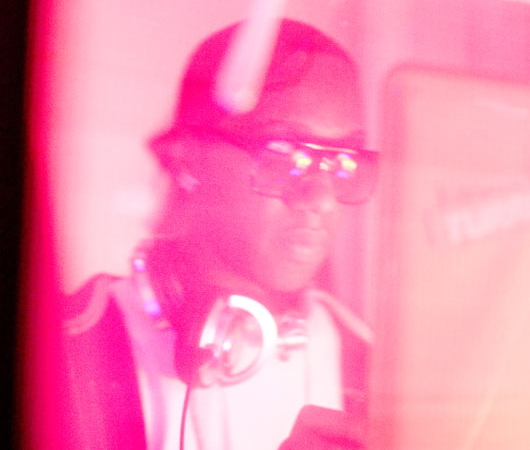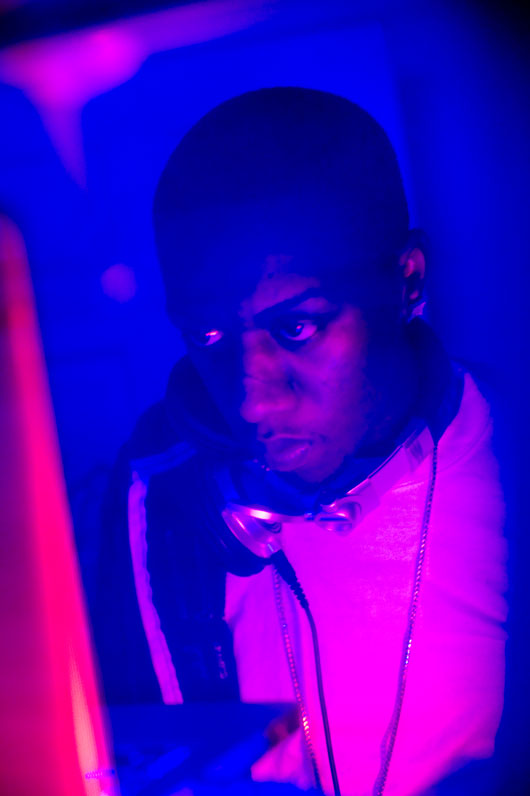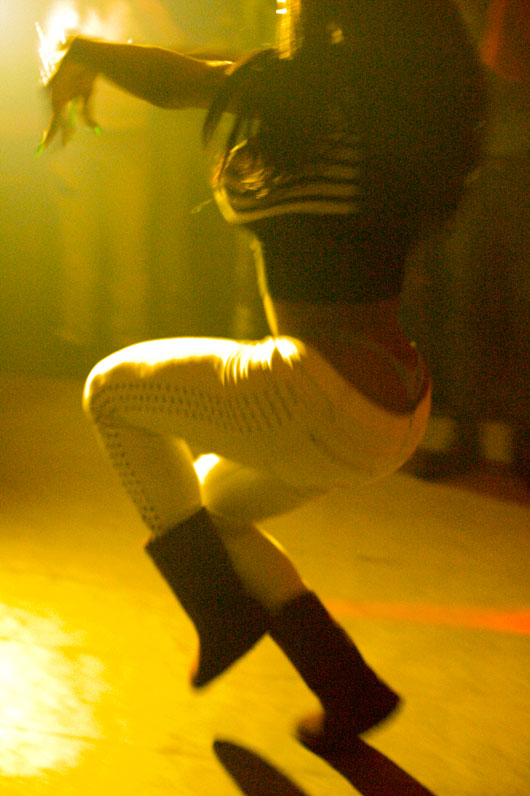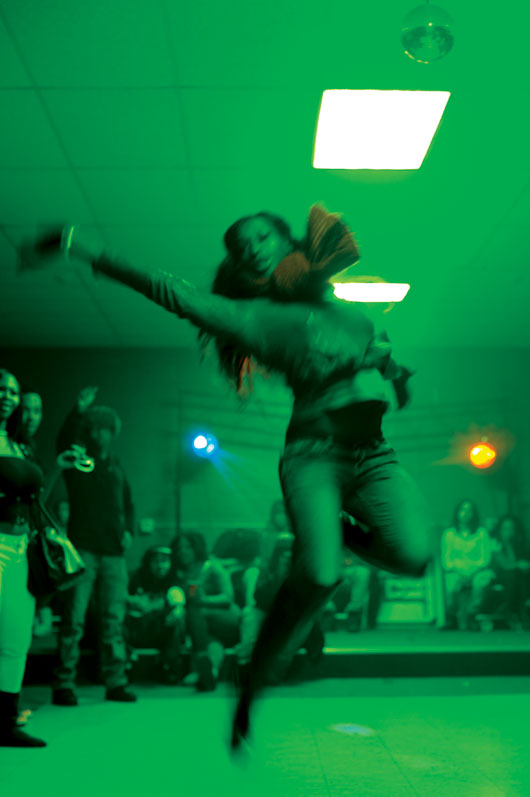Strictly Ballroom: After decades in the shadow of vogue dancing and culture, ballroom beats come to the fore.
Step on edgier dancefloors nowadays, and you best be prepared to come a little cunty, […]

Strictly Ballroom: After decades in the shadow of vogue dancing and culture, ballroom beats come to the fore.
Step on edgier dancefloors nowadays, and you best be prepared to come a little cunty, […]

Step on edgier dancefloors nowadays, and you best be prepared to come a little cunty, honey. Dip, drop, duckwalk, catwalk, hands, hands, hands: vogue dancing and ballroom culture are experiencing another moment in the media spotlight. This time, however, they’re bringing the ballroom beats with them, beats that are finding their way into sets from DJs as different as Kingdom, Greg Wilson, Seth Troxler, and Nick Curly.
As a gay and transgender African American expressive form, modern ball culture has been around since at least the 1960s, transforming the necessarily underground gay tradition of meeting in rented ballrooms for private parties—gay bars and dressing in drag in public were illegal back then—into jawdropping spectacles of over-the-top gowns and performances. Over the years, the mainly New York City scene gradually developed an intricate system of drag-house families, themed ball events, status hierarchy (stars, statements, legends, icons), and style of fashion runway-mimicking battle dance, or voguing, all of which are still evolving as the culture has taken root in the Midwest, the South, and even Europe. Sometime in the mid 1980s, the gowns began to drop to the wayside, and the dancing, soundtracked by disco sounds from Cheryl Lynn’s 1978 “Got to Be Real” to Maxtrack Orchestra’s phenomenal 1988 “Love is the Message,” took over the runway.
The ballroom scene experienced a mainstream breakout moment in the early ’90s, when first Malcolm McLaren’s 1989 release “Deep in Vogue” climbed the dance charts and then Madonna’s “Vogue” became a blockbuster pop hit. For many outside the scene, those two songs may be all they know of the sounds that accompanied the fierce chop ‘n mop house battles taking place in Harlem and the Lower East Side at that time. Jennie Livingston’s great 1990 documentary of vogue culture’s golden age, Paris is Burning, stinted on musicology in favor of social commentary and sheer spectacle, and an avalanche of AIDS deaths obscured much of the vinyl lineage.
So it’s no shock that the constantly advancing retro dance music machinery is lately unearthing gems from that short era, burnished as they are with mystery and glamor. The work of Danny and David Ian Xtravaganza, Jose & Luis, Robbie Tronco, and Frankie Fuentes and specific vogue-oriented tracks by Armand Van Helden, Robbie Rivera, Junior Vasquez, and Danny Tenaglia are all finding new lives through re-edited versions or straight-up ’90s dancefloor revivalism. Recent high-profile releases like Kim Ann Foxman’s “Creature” and Butch’s “No Worries” tap into the old-school vogue vibe in their own ways, and the forthcoming “Relax Relate Release” by Charles McCloud on the Abducted label presents the novelty of a straight, white gangster-rap producer emulating the old-school vogue sound he adores, with a futuristic twist. (It’s actually quite nice, as it turns out.)
But that golden ballroom moment was 20 years ago. Vogue culture has changed. It’s riding a new wave of exposure, through thousands of fan-posted YouTube videos, the massive viral reception that accompanied the five-member Vogue Evolution team’s televised run on America’s Best Dance Crew in 2009, and Willow Smith’s “Whip My Hair” video, which features Leiomy of Vogue Evolution and centers on her signature “Leiomy Lolly” hair-whip dance move, also co-opted by Britney Spears and Beyonce. Looser, less formal groups of young voguers called kiki houses are springing up alongside the established houses. A more aggressive style of voguing has taken over, as “vogue fem” (or “vogue femme”) continues to dominate the floor. And a new generation of DJs and musicians is doing the once-unthinkable—making new ballroom beats.
In the late ’90s, a different way of voguing began to come up. Like most styles of dance, vogue fem is more about a look and feel than a hard-and-fast set of rules. It can encompass ultra-feminine, ballet-like “soft and cunty” movements on the one end, and hyperactive, stunt-driven “dramatics” on the other. Wild hair tosses, heart-stopping drops, and angled twirls became the vogue fem hallmarks, however. With the new style, dancers began to gravitate towards nervier, more anxious music with sharp orchestra hits, cascades of percussive crashes, and super-choppy samples. The gracefulness and glamorous poses of the Old Way made room for more attention-grabbing moves, and the amped-up speed garage sound of the new tracks wouldn’t feel out of place on contemporary dance labels like Night Slugs or Fool’s Gold.
Kevin Aviance’s maximalist 1995 club song “Cunty” became the explicit anthem for this style, and “cunty” became its highest praise. But the true musical rock on which vogue fem was built is the 1991 Masters at Work track “The Ha Dance.” As a house release, “The Ha Dance” sounded pretty hard-driving for its time, relentlessly looping and manipulating a short sample from the movie Trading Places until it was transformed into a heckling metallic squiggle. With its bouncing crashes and staccato bass, it was perfect for the new style. And its elements could easily be reconfigured and combined with other samples to create even more vogue fem tracks, an endlessly replicating Ha that drops the queens to the floor.

“Oh, it’s definitely all about the Ha,” says 25-year-old New Jersey-based DJ MikeQ (pictured above), one of the three biggest DJs making ballroom beats today. “When I heard that track, I knew what I wanted to do.” Like Atlanta’s Legendary DJ Angel X and the new sound’s originator, Washington, DC’s Vjuan Allure, MikeQ spins a variety of different music, but is primarily known for his vogue fem style. Also like them, he sells dozens of self-produced tracks through his extensively developed website, and heavily brands each one with his audio tag.
Now a member of the House of Ebony, MikeQ went to his first ball at the Globe rental hall in downtown Newark in 2003, and made his first track a year later. (He started out with an Akai MPC1000, but currently uses a variety of sound programs and a “voice changing box.”) His Qween Beats Productions company is a revolving collaboration between himself and various vogue MCs, known as commentators. As for his musical style, his quiet, reserved manner in interviews belies an artful canniness that makes room for a wicked sense of humor: His recent hit, “I Whip My Ha,” closes the Willow Smith-Masters at Work vogue loop, and the just-released “Maurica” jumped on a comedy routine internet meme almost before it materialized.
Down in DC, Vjuan Allure, of the Nannie Trax label, is busy combining classic flair with future Ha. His “Come On and Get You Some More” from 2007 is a nod to First Choice’s “Let No Man Put Asunder” from 1983, while barnstormer “The Essicasy Ha” draws not just from “The Ha Dance,” but George Kranz’s 1983 staple “Din Daa Daa” and acid house. That easy rapport with the past is rooted in his experience—he’s been clubbing since he was 11 years old, and helped bring voguing to Italy when he was an exchange student in Naples.
“What it comes down to, is that whereas before there were a number of songs to play for the dancers, when vogue fem started getting popular there were only about six that really worked,” Vjuan tells me. “It was frustrating because I hate to repeat songs. So I became the first DJ to start making original tracks in that style. It just wasn’t done at the time.”
Dance music historians may not be surprised that there’s a connection to the Motor City. “I was asked to spin in Detroit at the Post Bar. Eric Christian Bizarre was commentating a ball there,” Vjuan says. “This was around 2000. I had brought all this music, and I was playing it—and in New York or DC they would have been dancing, but in Detroit they were not. They were just standing there… until I dropped the Ha. Then every kid in the building jumped up. And I was like, ‘You have got to be kidding me.’ And I got mad, because I had been told to bring things like ‘Love Hangover’—very basic things. I got mad, and I went home, and I started to create the first remix. Something just drove me to it.
“I used the Ha for my first track because I knew that that’s what they wanted to hear—because of vogue fem, everyone wanted the crash. So I gave them the crash but I changed the beat—I actually made it more dramatic. It was my own creation.”

Still, despite previewing snatches of them in his sets, Vjuan felt “really scared” to play his own tracks, feeding them instead to his mentor DJ Sedrick, Legendary District House Mother of DC and beloved anchor of the East Coast gay black house scene. According to Vjuan, word “spread like wildfire that there were new dramatic beats being played—but still I wasn’t ready to step forward.”
Finally, he was forced to take ownership at another Detroit ball, this one hosted by House of Rodeo. “It was very, very hot in the venue and Goddess Rodeo had these huge fans going. The commentator, Jack Mizrahi, hadn’t shown up yet, and this was hours into it. I was going to run out of music. So I thought, ‘It’s now or never,’ and went into a whole Vjuan Allure set. And the place just went nuts. So that’s how I knew.”
Vjuan prefers his tracks to come fast and physical, an urge cemented by his status in the House of Allure. “I have my Simian sampler workstation, my Kawaii drum machine, and some sequencers, which is how I prefer to work. I can knock out a track in 15 minutes. With a computer you’ll spend 20 minutes just doing one part. It’s a hassle. I like to hit that trigger, to get that timing with the cue buttons and really feel the rhythm. What you hear me doing live when I’m out, I’m actually doing live.
“One of the things that sets me apart from every other DJ who makes music is that I’m the only one who walks. I vogue. I walk Old Way, that’s my category. It’s natural for me, and the energy for me to dance, period, has to be high. So my tracks come out that way, not matter what kind of tracks I’m giving you—vogue fem, face tracks, Old Way songs, legends, statements, and stars songs. The energy is always high, high, high.”
If MikeQ comes off as smart yet shy, and Vjuan Allure as outspoken and motherly, then Legendary DJ Angel X is the bad-boy lover of the three. When I ask him why he moved down to Atlanta from his native Brooklyn, he immediately says, “The boys. I personally love the black guys, and this is where the hottest ones are.”
Angel X belongs to one of the most storied New York-based houses, Xtravaganza, but he came down south a few years ago at the request of Icon Andre Mizrahi to help him out on balls. The Atlanta scene keeps him as busy as the other two DJs, with gigs almost every night of the week, about 30 percent of them ball-related. He’s been making beats since 2003, following in the footsteps of Vjuan Allure, and he got his start as a DJ at the fabled Stonewall Inn in Greenwich Village when he was 16.
Angel X’s Aunt Naomi introduced him to house music as a baby—”No matter what I play, I always return to the house,” he says—but his productions, made mostly on Fruity Loops, evidence a wide-ranging ear. His breakthrough was a breathless cross-pollination of “The Ha Dance” and the theme from the X-Men animated TV series of the ’90s. Newer tracks, however, draw from Detroit techno, Baltimore club music, and more global sounds. “I like to play with whatever catches my ear, then come back to it over a couple months’ time when I have something to add,” he says. “Often I don’t know what spirit got into me.” (His restless ear could be symptomatic of a restless spirit; he told me he sometimes finds the ball scene “corny” after all this time and wants more gigs at “regular” gay house parties.)

Besides moving the music forward, Angel X is emblematic of the spread of ballroom culture. While many of the new wave of Ha makers—Brooklyn’s Divoli S’vere, New Jersey’s DJ Rico—still hail from vogue’s original locus, others, like Shariff and Kevin JZ Prodigy from Philadephia, Houston’s B. Ames, and the Bamabounce collective from Birmingham, Alabama, enlarge the geographic perspective. Vjuan, Angel, and MikeQ travel around the region constantly, and have yet to notice any specific regional vogue dance or musical style.
“With the technology, you don’t have that kind of differentiation,” says Vjuan. “Once someone does something new, everybody can see it or hear it. That’s the great thing, even though it leads to a lot of copying. Everyone can know about your ball now—where it is, how much it is. And anyone is welcome to come to a function. You’ll have to put up with a whole lot of gay kids, but you can come.
“What I do worry about is things getting watered down,” he admits. “People coming in and thinking they can throw a ball when they’ve never even been to a ball. I don’t ever want to lose the original creativity, the spirit that’s been passed down. Once the creativity’s diminished, that’s the downfall.”

